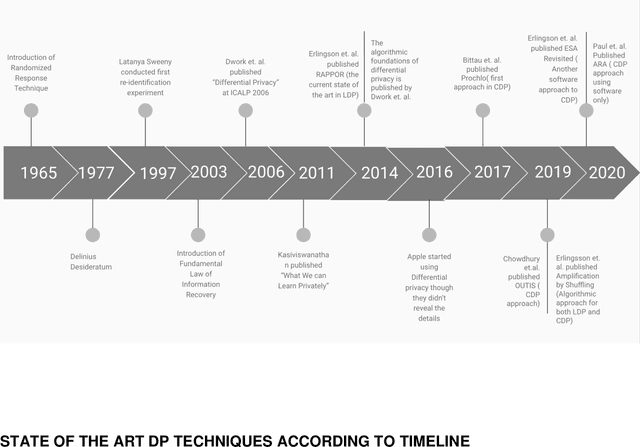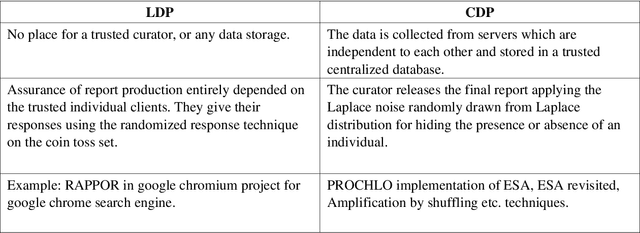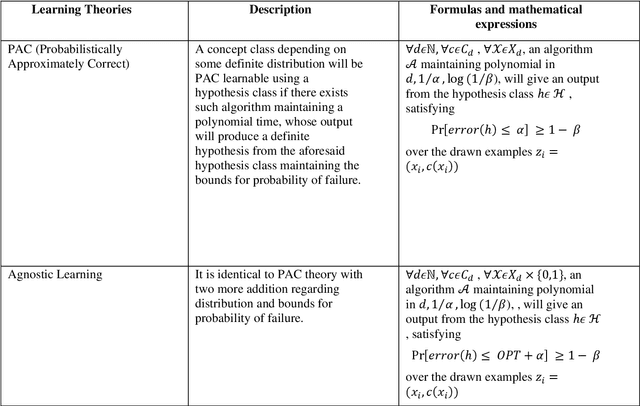Poushali Sengupta
Balancing Explainability-Accuracy of Complex Models
May 23, 2023Abstract:Explainability of AI models is an important topic that can have a significant impact in all domains and applications from autonomous driving to healthcare. The existing approaches to explainable AI (XAI) are mainly limited to simple machine learning algorithms, and the research regarding the explainability-accuracy tradeoff is still in its infancy especially when we are concerned about complex machine learning techniques like neural networks and deep learning (DL). In this work, we introduce a new approach for complex models based on the co-relation impact which enhances the explainability considerably while also ensuring the accuracy at a high level. We propose approaches for both scenarios of independent features and dependent features. In addition, we study the uncertainty associated with features and output. Furthermore, we provide an upper bound of the computation complexity of our proposed approach for the dependent features. The complexity bound depends on the order of logarithmic of the number of observations which provides a reliable result considering the higher dimension of dependent feature space with a smaller number of observations.
FLaPS: Federated Learning and Privately Scaling
Sep 13, 2020



Abstract:Federated learning (FL) is a distributed learning process where the model (weights and checkpoints) is transferred to the devices that posses data rather than the classical way of transferring and aggregating the data centrally. In this way, sensitive data does not leave the user devices. FL uses the FedAvg algorithm, which is trained in the iterative model averaging way, on the non-iid and unbalanced distributed data, without depending on the data quantity. Some issues with the FL are, 1) no scalability, as the model is iteratively trained over all the devices, which amplifies with device drops; 2) security and privacy trade-off of the learning process still not robust enough and 3) overall communication efficiency and the cost are higher. To mitigate these challenges we present Federated Learning and Privately Scaling (FLaPS) architecture, which improves scalability as well as the security and privacy of the system. The devices are grouped into clusters which further gives better privacy scaled turn around time to finish a round of training. Therefore, even if a device gets dropped in the middle of training, the whole process can be started again after a definite amount of time. The data and model both are communicated using differentially private reports with iterative shuffling which provides a better privacy-utility trade-off. We evaluated FLaPS on MNIST, CIFAR10, and TINY-IMAGENET-200 dataset using various CNN models. Experimental results prove FLaPS to be an improved, time and privacy scaled environment having better and comparable after-learning-parameters with respect to the central and FL models.
Learning With Differential Privacy
Jun 11, 2020



Abstract:The leakage of data might have been an extreme effect on the personal level if it contains sensitive information. Common prevention methods like encryption-decryption, endpoint protection, intrusion detection system are prone to leakage. Differential privacy comes to the rescue with a proper promise of protection against leakage, as it uses a randomized response technique at the time of collection of the data which promises strong privacy with better utility. Differential privacy allows one to access the forest of data by describing their pattern of groups without disclosing any individual trees. The current adaption of differential privacy by leading tech companies and academia encourages authors to explore the topic in detail. The different aspects of differential privacy, it's application in privacy protection and leakage of information, a comparative discussion, on the current research approaches in this field, its utility in the real world as well as the trade-offs - will be discussed.
BUDS: Balancing Utility and Differential Privacy by Shuffling
Jun 07, 2020



Abstract:Balancing utility and differential privacy by shuffling or \textit{BUDS} is an approach towards crowd-sourced, statistical databases, with strong privacy and utility balance using differential privacy theory. Here, a novel algorithm is proposed using one-hot encoding and iterative shuffling with the loss estimation and risk minimization techniques, to balance both the utility and privacy. In this work, after collecting one-hot encoded data from different sources and clients, a step of novel attribute shuffling technique using iterative shuffling (based on the query asked by the analyst) and loss estimation with an updation function and risk minimization produces a utility and privacy balanced differential private report. During empirical test of balanced utility and privacy, BUDS produces $\epsilon = 0.02$ which is a very promising result. Our algorithm maintains a privacy bound of $\epsilon = ln [t/((n_1 - 1)^S)]$ and loss bound of $c' \bigg|e^{ln[t/((n_1 - 1)^S)]} - 1\bigg|$.
 Add to Chrome
Add to Chrome Add to Firefox
Add to Firefox Add to Edge
Add to Edge